A spherical mirror is a mirror that has a piece or a shape cut out of a spherical surface. There are mainly two types of spherical mirrors: convex and a concave mirror. This article will primarily focus on the history of spherical mirrors in human civilization.
- The spherical mirrors first used by the human race looked like pools of water.
- The earliest manufactured mirrors known to us were polished stone pieces.
- Chinese people started making mirrors with silver-mercury amalgams early in 500 AD.
- Claudius Ptolemy conducted various experiments with curved, polished iron mirrors.
But before we further discuss the history of spherical mirrors in human civilization, let us first understand what are spherical mirrors first.
What are spherical mirrors?
A spherical mirror is the one whose surface is either concave or convex and forms a part of a true sphere. Concave and convex are the two different types of a spherical mirror. The most common examples of concave mirrors include shaving mirrors and makeup mirrors. These mirrors are used in everyday life, and thus their purpose is quite common. They help in magnifying objects placed close to them.
The most common examples of convex mirrors include the passenger-side wing mirrors of cars. The convex mirrors have wider fields of use as compared to equivalent mirrors that are flat, but objects that appear in them generally look smaller (and at a farther distance) than they actually are.
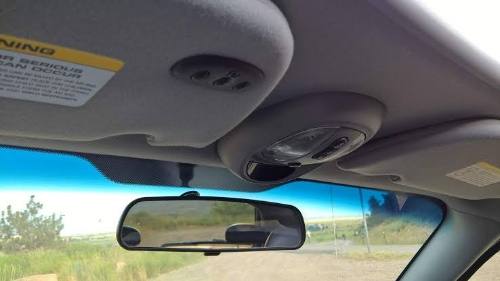
A spherical mirror is the one whose surface is either concave or convex and forms a part of a true sphere.
History of spherical mirrors in human civilization: Details
The first spherical mirrors in human civilization used were mostly like pools of dark still water or water collected in a primitive vessel (or utensil) of some sort. The earliest manufactured mirrors used by humans were pieces of polished stone, for example, like that of obsidian, a naturally occurring volcanic glass. The obsidian mirrors found in Anatolia (now popularly known as Turkey) have been dated to around 6000 BC. Mirrors of polished copper were crafted early in the Mesopotamian civilization from 4000 BC and in ancient Egypt from around 3000 BC as well.
The history of spherical mirrors in human civilization is not just limited to those areas. Polished stone mirrors have also been discovered from Central and South America, that date from around 2000 BC onwards. Bronze mirrors were manufactured in China from around 2000 BC. Some of the earliest bronze and copper mirror examples include the ones produced by the Qijia culture.
Mirrors made of other metal mixtures or alloys have also been discovered so far, like the ones made from copper and tin speculum metal in China and India. Mirrors made from speculum metal or any precious metal were hard to produce at old times, and therefore only the wealthy owned them.

Glass mirrors coated with metal are said to have been invented in Sidon, modern-day Lebanon (in the first century AD). Glass mirrors backed with gold leaf are debated by the Roman author Pliny in his NATURAL HISTORY, which was written in about 77 AD. The credit for the development of the technique for creating crude mirrors in the history of spherical mirrors in human civilization goes to the Romans. They used to coat blown glass with molten lead.
The parabolic mirror was mentioned and studied in a classical period by the mathematician Diocles in his famous work: On Burning Mirrors. A number of experiments were conducted by Ptolemy on curved, polished iron mirrors. He discussed all types of mirrors- plane, convex spherical and concave spherical mirrors in his Optics.

In the 10th century, parabolic mirrors were also discovered by a physicist named Ibn Sahl. Ibn al-Haytham, a famous mathematician of his times, debated on concave and convex mirrors using cylindrical and spherical geometries. He carried out many experiments on the same and discovered the point on these mirrors at which a ray coming from one point is reflected another point. By the 11th century, clear glass mirrors were started being produced in Moorish Spain as well.
People began making mirrors with the use of silver-mercury amalgams in China around 500 AD.
The time of the Renaissance also forms part of the history of spherical mirrors in human civilization. During the early Renaissance, manufacturers of Europe perfected a better method of coating glass with an amalgam of tin and mercury. However, the exact date and location of the discovery still remain unknown. In the 16th century, a city was famed for its expertise on glass-making: Venice. It became a centre of mirror production just after the new method was discovered. Ever since this period, the glass mirrors were then considered among expensive luxuries.
Founded by royal initiative in France, The Saint-Gobain factory was an important manufacturer of spherical mirrors. The Bohemian and German glass (which were comparatively cheaper) eventually also made an entrance in the history of spherical mirrors in human civilization.
In 1835, the invention of a silvered-glass mirror was credited to Justus von Liebig- a German chemist. This invention process involved deposition of a thin layer of metallic silver onto glass, which was in turn through the chemical reduction of silver nitrate. The process was then later adapted for mass manufacturing and led to increased availability of mirrors at affordable prices. In recent times, mirrors are produced by the wet deposition of silver directly onto the glass substrate. Sometimes, a deposition of aluminum via vacuum also is used for the production of mirrors.
Present-day scenario of spherical mirrors
The image formed by the spherical mirror has been put to a lot of use in the modern arena, the credit for which of course goes to the history of spherical mirrors in human civilization, without which nothing would have been possible. The entire evolution of spherical mirrors being put to use has divided it into two kinds:
- Convex mirrors
- Concave mirrors
In the present date, spherical mirrors are mainly used in these two forms. Let us now discuss them in detail.
What is a concave mirror?
A hollow sphere is cut with its outer surface painted; the inner part then acts as a reflecting surface (mirror). A mirror with such features is called a concave mirror.
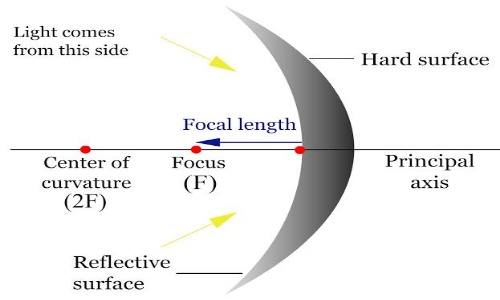
When light strikes any point on a concave mirror, it converges at the point after striking and reflects back from the reflecting surface of the mirror. This is the reason why it is also known as a converging mirror.
When a concave mirror is placed very close to an object, a magnified and virtual image is formed. However, the size of the image reduces, and a real image is formed if we keep on increasing the distance between the object and the mirror. So, we can conclude that the image formed by a concave mirror varies- from small to large and from being real to virtual.
Details on Image formation by a concave mirror
Formation of different types of images by a concave mirror is possible by changing the position of the object from the mirror. The varied positions (from the mirror) from which different size of the image can be obtained are:
- When placed at infinity
- When placed beyond the center of curvature
- When placed at the center of curvature
- When placed in between the center of curvature and principal focus
- When placed the principal focus.
- When placed in between the principal focus and pole
What is a convex mirror?
A part of a hollow sphere being cut and painted from inside, its outer surface then becomes the reflecting surface and a mirror with such features is called a convex mirror. Also known as a diverging mirror, a convex mirror diverges light when it strikes on its reflecting surface. A virtual, erect, and diminished image is always formed when light strikes the convex mirror, irrespective, no matter what the distance between the object and the mirror might be. Among other applications, a convex mirror is also used as a rearview mirror in vehicles.
Also, read History of Indian currency notes and coins.
Details on Image formation by a convex mirror
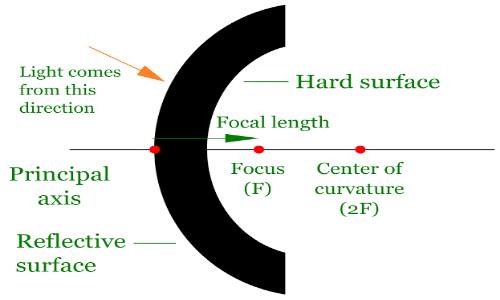
The image formed by a convex mirror is always virtual and erect, no matter at what position the object may be placed. In this respect, let us look at the kinds of images formed by a convex mirror.
- When an object is placed at infinity, a virtual image is formed at the focus by a convex mirror. The size of the image formed is much smaller in comparison to that of the object.
- When an object is placed at some distance from the mirror, a small and virtual image is formed between the pole and the focus. The size of the image here to is much smaller in comparison to that of the object.
Present-day Uses Of Spherical Mirrors.
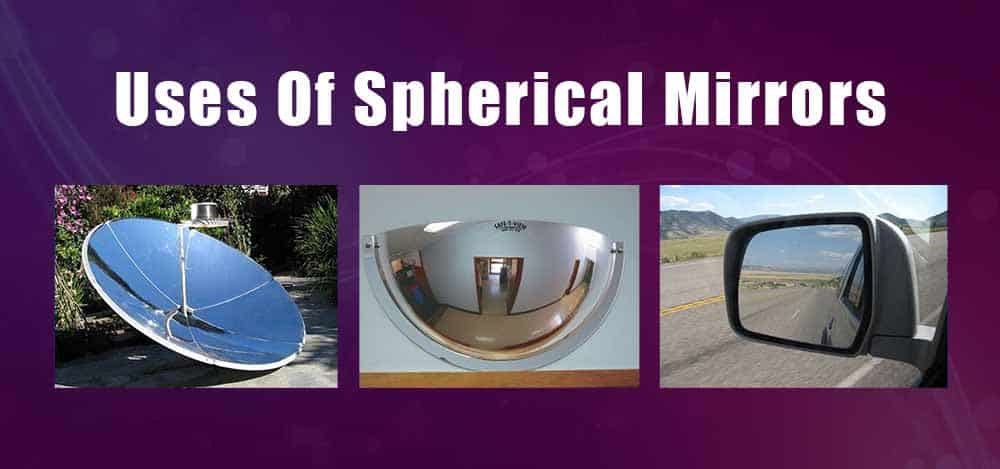
Some of the uses of spherical mirrors are listed below:
1.Rearview mirror- The mirror of the cars for side view form a small and erect image with the help of convex mirrors. These mirrors thus help in keeping a watch on the way behind the car while driving.
2. Security mirrors in ATM- The security mirrors are kept near the ATMs. This helps the bank customer to check whether somebody is behind them or not.
3. Satellite dishes- One of the essential uses of a concave mirror is satellite dishes. They receive the weaker signals sent from the communication satellites in space and then amplify it.
4. Headlights in a car- A powerful source of light in a car is kept at the focal point of a concave mirror in a smaller space at the back of the headlight. Due to this, any light striking the mirror from the focus gets automatically reflected parallel to the axis of the concave mirror.

5. Shaving mirror- One more use of the concave mirror is a shaving mirror. The image formed after the reflections of the concave mirrors helps the people while shaving.
Conclusion
The history of spherical mirrors in human civilization is phenomenal if you study it closely. It took a series of events for its evolution and even more, for discovering its use in different fields.
Still or dark water collected in a vessel was considered or used as mirrors by ancient people in the ancient ages. Then with passing days, obsidian mirrors came into existence. Followed by metal-coated glass mirrors, this led to the discovery of metal coated spherical mirrors. Parabolic mirrors were then discovered in the mid-ninth century by two people- Ibn Al Haytham and Ibn Sahl. These were described in classical antiquity in the form of one of the books written by a mathematician named Diocles. In addition to these researches, Ptolemy also did a lot of experiments with curved, polished iron mirrors and has mentioned about convex and concave mirrors in his book named Optics.

In spite of all these researchers, the most difficult task in the history of spherical mirrors in human civilization was finding the focal length of a spherical mirror. But finally, Ibn Al Haytham got a breakthrough by discovering the focal length of spherical mirrors by use of the laws of reflection. He stated that “All the reflected rays of a mirror converge or diverge and meet at a point known as focus and the distance between focus and pole of the mirror is known as the focal length of the mirror.’’
Many years later, the scientists concluded the two types of spherical mirrors: concave and convex mirrors. The invention of these two kinds of spherical mirrors changes human life to all extent and have now become an indispensable part of our lives.
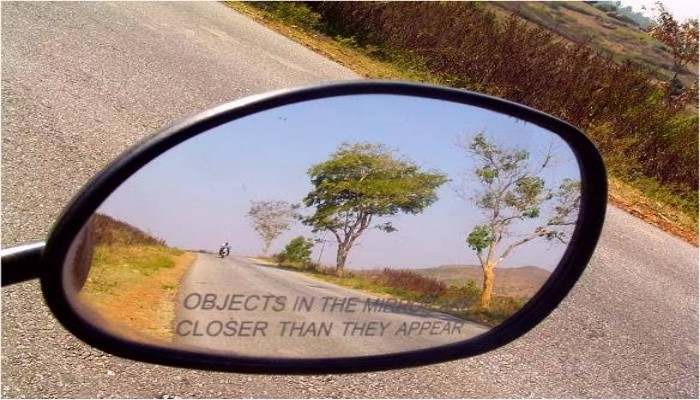
It is a awesome experience of studying this I loved to read ……..
Just like knowing something a different thing want to learn more like this ….
I\’m sure that it is helpful for me…..
Thank U so much…..
It is awesome
I have this project for my school
This is the detailed explained here and in last we also have conclusion for this
So this is very useful for me
Thank you so much
Ya it\’s too help ful
This was really good
Such a wonderful article that too with good coordination of images and also one can able to connect the concept in an order.
Keep it up